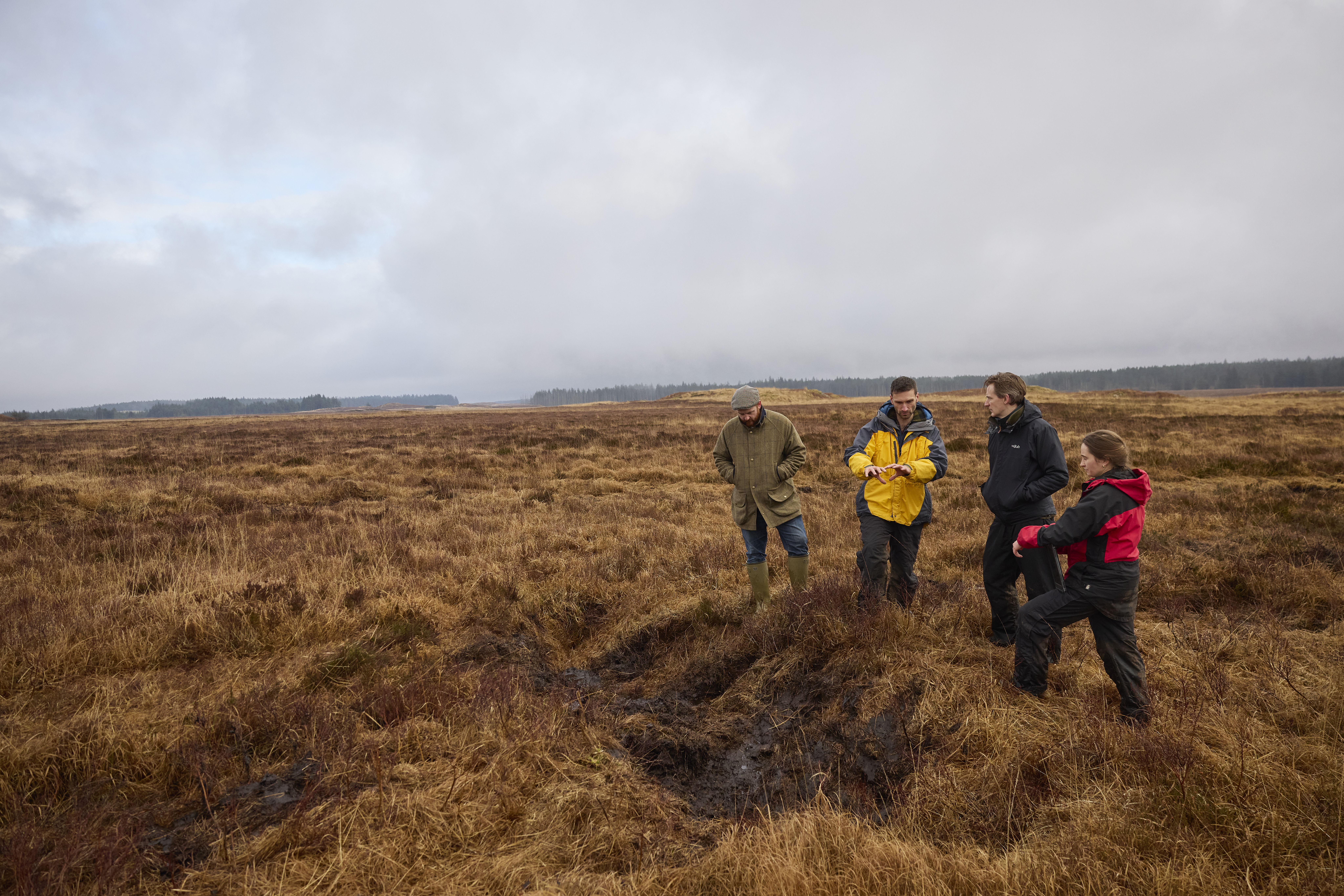Natural Capital
4 minutes
07/04/2025
Why does Peatland Restoration Matter?
To answer this question, we explore Knock Fell, one of our flagship natural capital projects in Scotland, and highlight how a holistic approach to natural capital not only enhances environmental resilience but also drives sustainable financial returns.


As Scotland pushes toward its ambitious net-zero target by 2045, the role of natural carbon sinks like peatlands has never been more critical. Peatlands are a cornerstone of Scotland’s ecological and climate strategy, storing an estimated 1.6 billion tonnes of carbon while also serving as vital habitats for biodiversity. However, decades of degradation have turned many of these landscapes from carbon absorbers into carbon emitters.
Foresight is actively addressing this challenge through its restoration work at Knock Fell, a site undergoing a transformation that blends peatland rehabilitation, sustainable forestry, and regenerative agriculture. This initiative presents an exciting opportunity for private capital to be deployed in nature-based solutions that deliver environmental performance alongside risk-adjusted returns.

A Holistic Approach to Natural Capital Management
At Knock Fell, a holistic approach ensures that the land delivers multiple benefits, balancing environmental restoration with sustainable economic outputs. The project includes:
- Peatland Restoration: By blocking drains, reshaping damaged terrain, and relandscaping gullies, the peatland is being returned to a functioning bog. This proactive intervention is expected to prevent the release of approximately 23,000 tonnes of carbon while reestablishing a healthy ecosystem that will eventually sequester carbon again.
- Sustainable Forestry: A combination of native broadleaf and commercial conifer species will contribute additional carbon sequestration and provide sustainable timber resources.
- Regenerative Agriculture: Introducing a low-density grazing system with Galloway cattle will support biodiversity, promote soil health, and offer high-quality specialist meat and rare bloodstock.
This diversified approach ensures resilience in both the ecosystem and the financial model, creating multiple revenue streams for investors.

Integrating Forestry, Regenerative Agriculture, and Peatland Restoration
Historically, landowners drained peatlands to maximise grazing land, but with today’s climate and biodiversity challenges, a shift in land use strategy is imperative. At Knock Fell, a carefully designed balance between peatland restoration, sustainable forestry, and regenerative grazing practices ensures that the land is used in a way that aligns with its natural characteristics.
This integrated approach not only restores ecosystems but also broadens income streams, from carbon and biodiversity credits to sustainable timber and regenerative livestock. The result is a more resilient and valuable landscape that can generate returns for investors while supporting Scotland’s sustainability goals.
The Case for Peatland Restoration
Peatland degradation is a major contributor to Scotland’s carbon emissions, responsible for an estimated 15% of the nation’s total output. Restoring these landscapes is one of the most cost-effective and scalable nature-based solutions for carbon sequestration. Additionally, healthy peatlands support rare plant and animal species, improve water quality, and help regulate flooding.
At Knock Fell, the restoration work is already well underway, with interventions carefully monitored to ensure long-term success. The project adheres to the Peatland Code, ensuring ongoing assessment and verification of carbon sequestration benefits.

Long-Term Impact and Investment Opportunity
By taking a stewardship approach, Foresight aims to enhance the ecological value of the land while positioning it for future economic growth.
Ultimately, the goal is to leave the land in a better state than it was found, creating a resilient rural asset that can attract strong financial returns. This model demonstrates how investments in natural capital can align with both environmental responsibility and long-term wealth preservation.
Knock Fell exemplifies how strategic land management can generate both financial returns and meaningful environmental impact - making it a blueprint for investing in nature. Check out our video below and for more information, visit: foresight.group/natural-capital-strategy